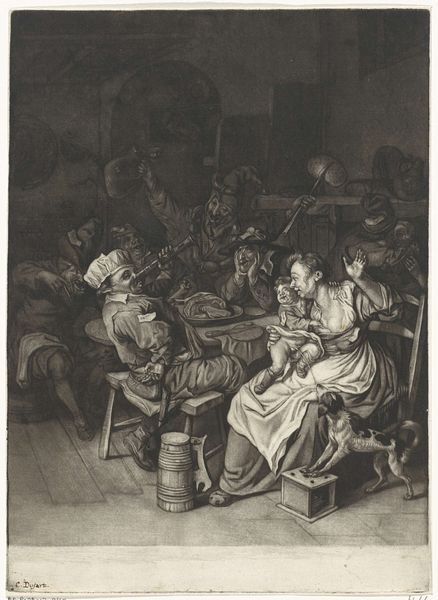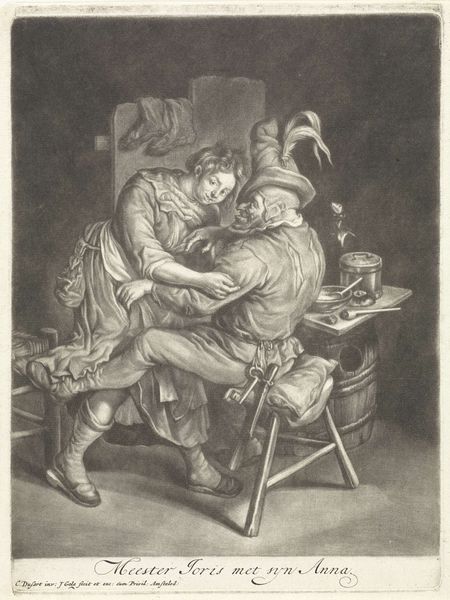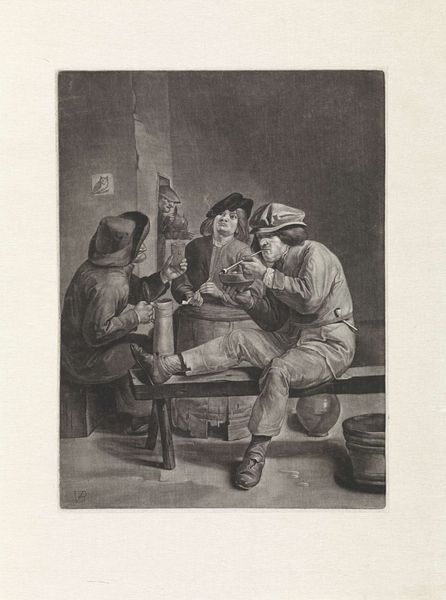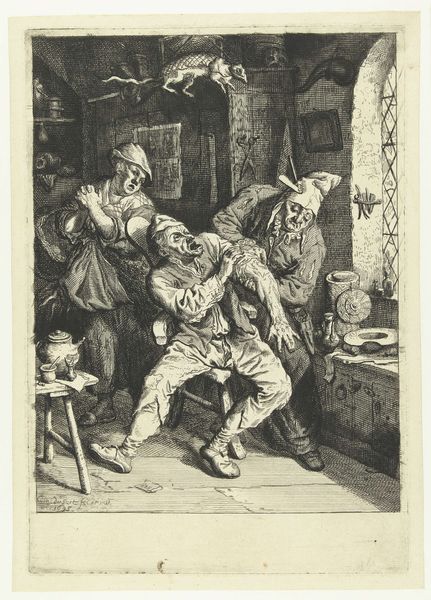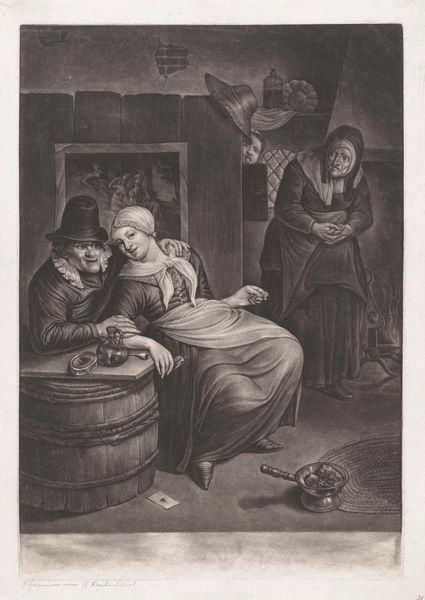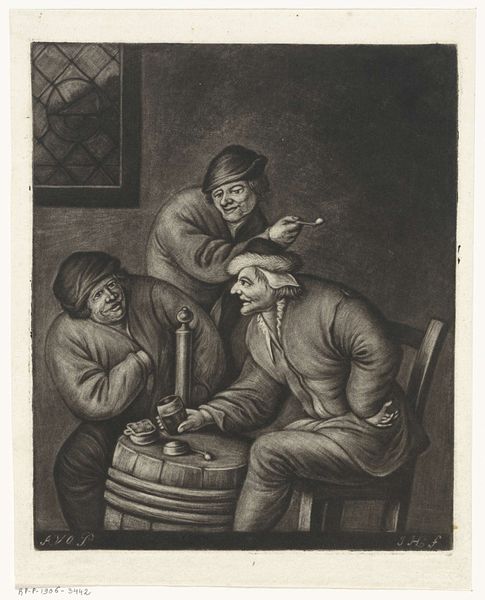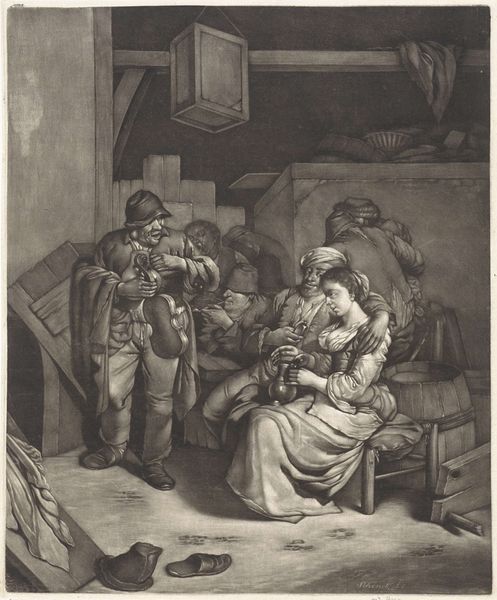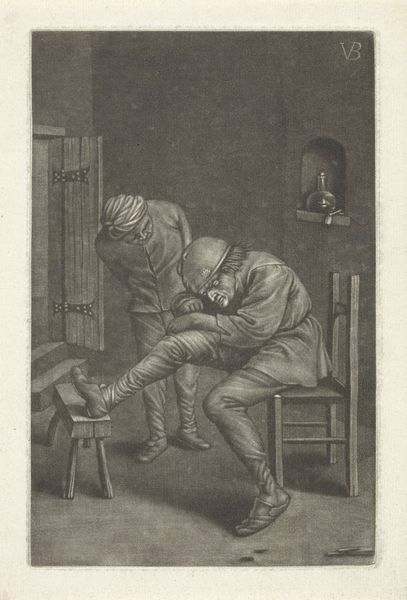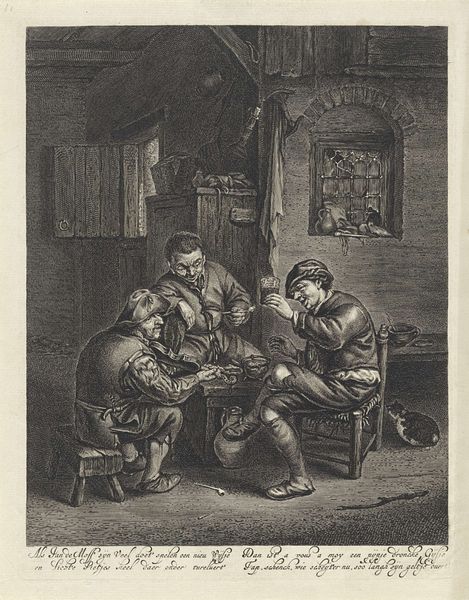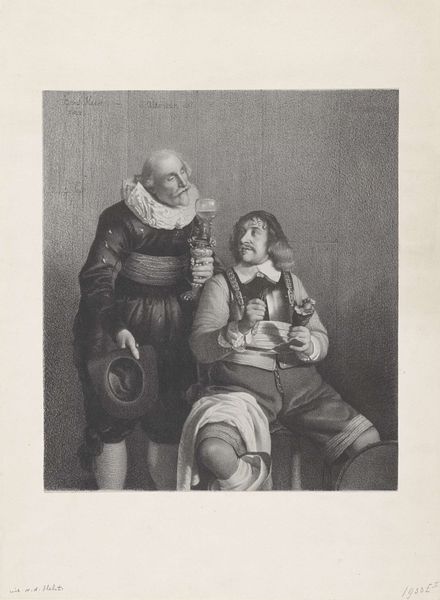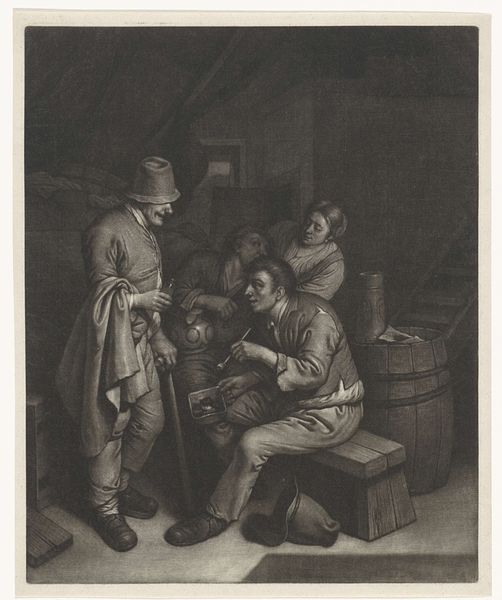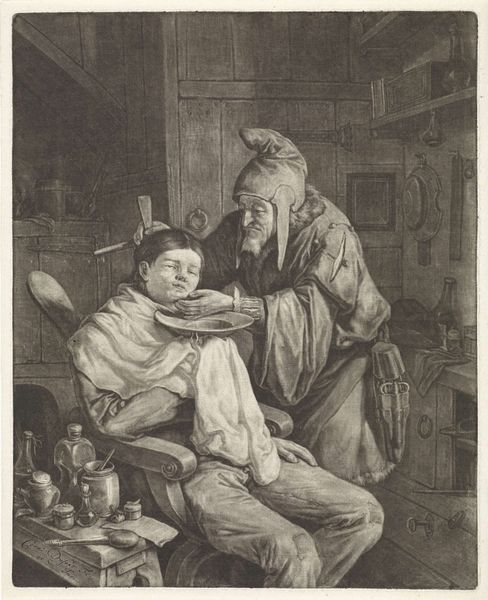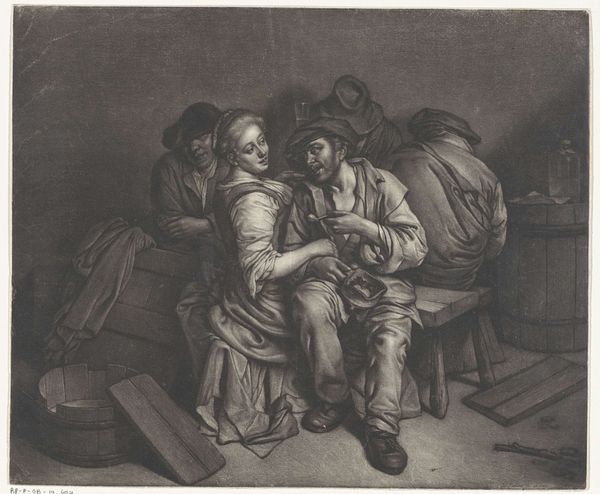
lithograph, print, etching
#
portrait
#
narrative-art
#
dutch-golden-age
#
lithograph
# print
#
etching
#
figuration
#
intimism
#
genre-painting
#
graphite
#
erotic-art
Dimensions: height 250 mm, width 180 mm
Copyright: Rijks Museum: Open Domain
Editor: So, here we have "Boer en een vrouw" by Jacob Gole, created sometime between 1670 and 1724. It's a lithograph, etching, and print housed here at the Rijksmuseum. It seems to depict a scene from daily life, yet there's a kind of underlying tension. What do you see in this piece? Curator: What I see is a staged encounter rife with socioeconomic power dynamics and gendered assumptions common in the Dutch Golden Age. Think about it: we have a seemingly inebriated peasant, juxtaposed with a woman actively attempting to rob him. It challenges notions of bucolic bliss and exposes some harsh realities. Consider her agency versus his vulnerability. Editor: I see your point about power dynamics. It’s easy to view it simplistically as just a genre scene. The woman's direct gaze is rather striking, now that you mention it. Curator: Precisely. The artist, Jacob Gole, utilizes figuration, typical of narrative art from the period. But the focus is less on moralizing and more about portraying, or perhaps even satirizing, those power imbalances and social stratifications through intimate, almost intrusive, depiction of daily life. Notice the contrast between the dimly lit interior and the activity occurring there, which could suggest a desire to obscure, to conceal such encounters from broader societal judgment, wouldn't you say? Editor: I didn't notice that before. So, it's not just about showing a scene; it's also a subtle critique? Curator: It's definitely an invitation to reflect on gender roles and the economics of daily existence. How do you think viewers at the time might have responded? Editor: Maybe with a sense of recognition, even discomfort? It probably hit closer to home than we might initially think. This has definitely changed my perspective. Curator: And hopefully prompted you to engage critically with the art and history and relate that discourse with gender, class and race.
Comments
No comments
Be the first to comment and join the conversation on the ultimate creative platform.

